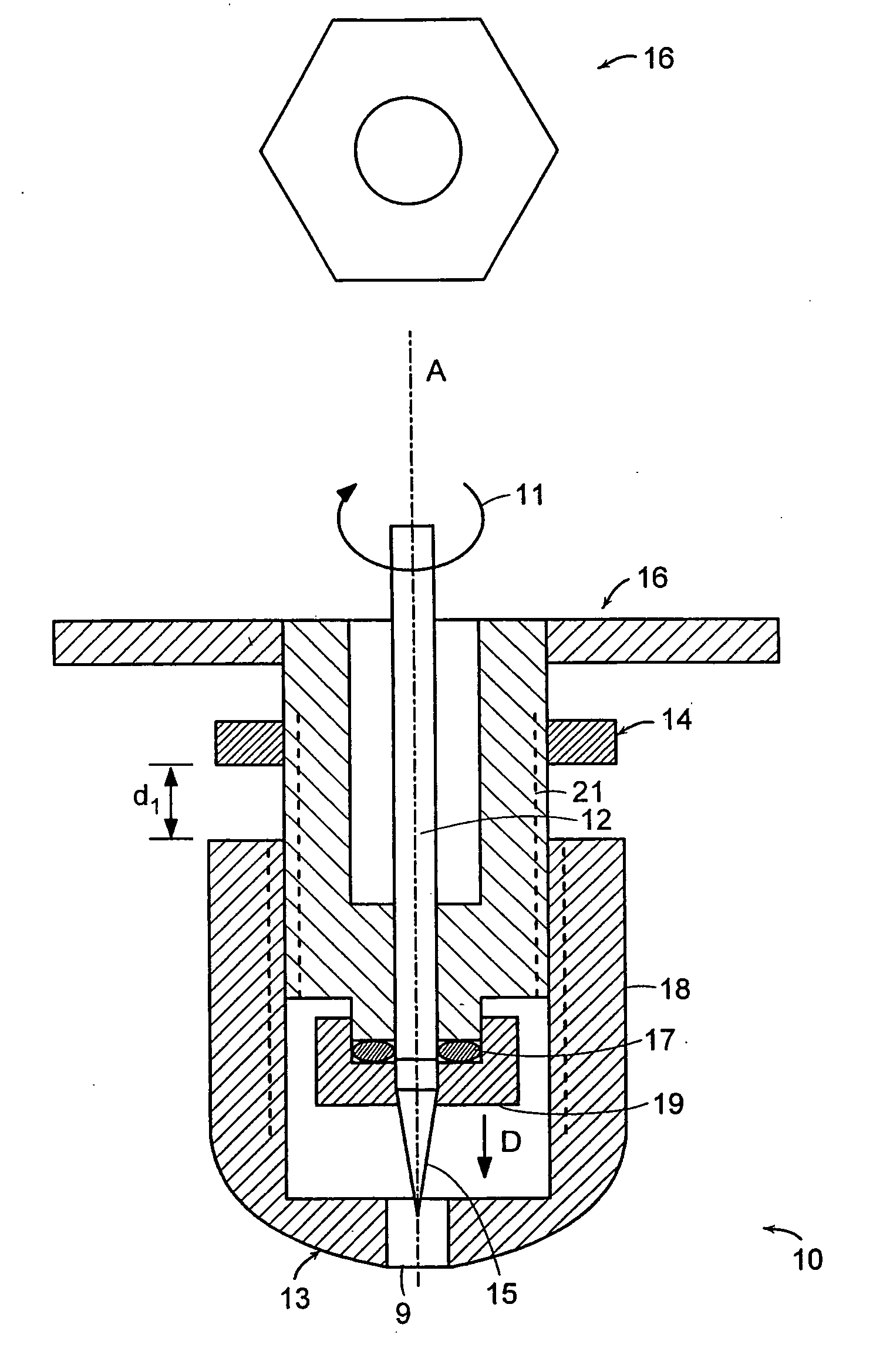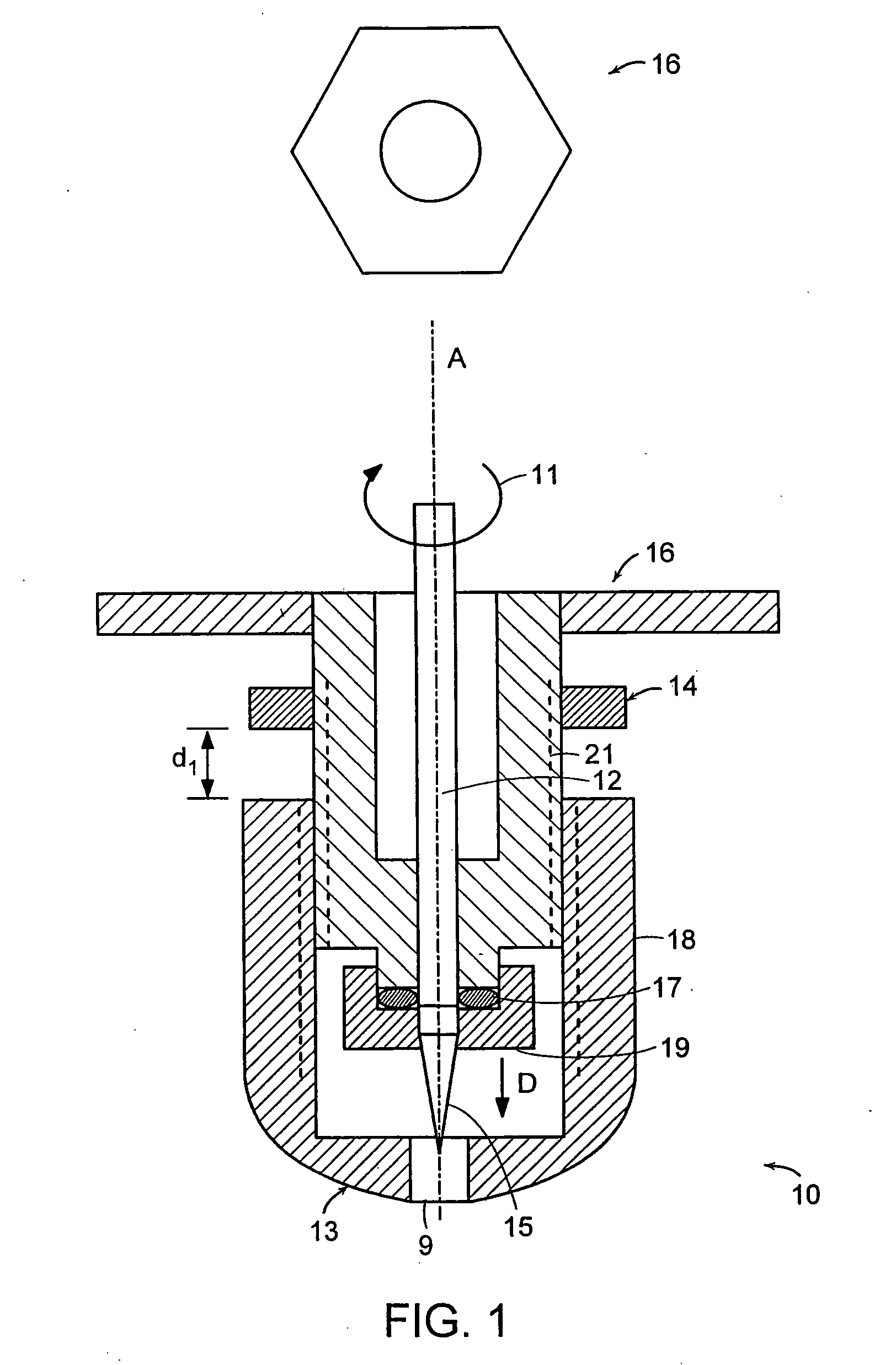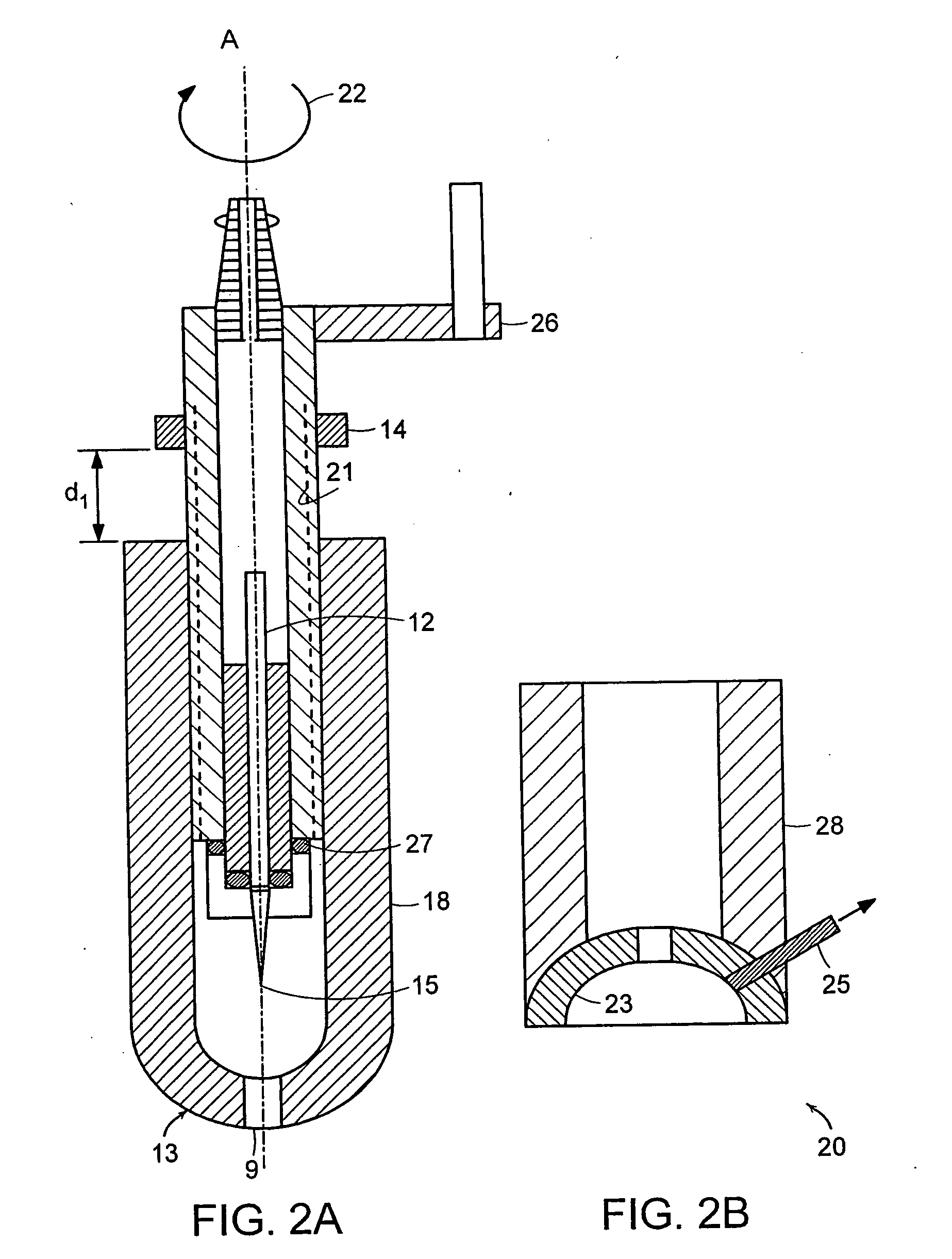Drilling microneedle device
a microneedle and drill bit technology, applied in the field of injection/extraction devices, can solve problems such as serious infection risk, and achieve the effect of preventing injury to patients and better controlling the penetration depth
- Summary
- Abstract
- Description
- Claims
- Application Information
AI Technical Summary
Benefits of technology
Problems solved by technology
Method used
Image
Examples
example 1
Drilling Hairless-Skin with Microneedle Device
[0136] An area of rat skin was shaved to remove hair and reveal the skin surface underneath. A microneedle device as depicted in Figure xxx was used to drill holes on the hairless skin area, using a microneedle with a maximum drilling depth of about 800 μm.
[0137]FIG. 14 shows, at two different magnification, that a single hole with a relatively round shape was generated after drilling. FIG. 15 is a cross-section of the hole shown in FIG. 14, obtained by freezing the drilled hole and sectioning using microtome. The figure shows that the drilling left in the skin a hole with a depth of about 730 μm, and a diameter of about 87 μm at the surface of the skin.
example 2
Drilling Hairless-Skin with Microneedle Device, and ISF Collection
[0138] An area of bare skin was prepared as above. After drilling 3-10 points in the general area, a vacuum pressure of about −200 to −500 mmHg was applied to the area with drilled holes, for about 5-10 minutes. After suction, small interstitial fluids (ISF) and blood droplets appeared at the skin surface. The ISF collected through the vacuum, which was about 700 nL total in volume, turned out to be sufficient for glucose level monitoring using a standard glucose monitoring device, such as the FreeStyle™ blood glucose sensor (TheraSense, Alameda, Calif.). The measured glucose level is identical to the blood glucose level.
[0139]FIG. 17 shows a cross-section of the bare rat skin drilled for fluid extraction.
example 3
Drilling Hairless-Skin with Microneedle Device and Fluid Microinjection
[0140] An area of bare skin was prepared as above. Tissue blue dye (marker) was prepared as 20% solution in PBS, and infusion of the dye solution through the subject microneedle device lasted about 5 minutes under a positive pressure of about 10 psi. The injected skin specimen was cut off and frozen in liquid N2, and then sectioned using microtome to reveal the depth the dye reached. FIG. 16 shows that the deepest reach of the dye was about 370 μm, indicating that the subject device can be used to control the distance of needle reach, such that an automatic drug injection with a pre-determined depth can be achieved.
PUM
 Login to View More
Login to View More Abstract
Description
Claims
Application Information
 Login to View More
Login to View More - R&D
- Intellectual Property
- Life Sciences
- Materials
- Tech Scout
- Unparalleled Data Quality
- Higher Quality Content
- 60% Fewer Hallucinations
Browse by: Latest US Patents, China's latest patents, Technical Efficacy Thesaurus, Application Domain, Technology Topic, Popular Technical Reports.
© 2025 PatSnap. All rights reserved.Legal|Privacy policy|Modern Slavery Act Transparency Statement|Sitemap|About US| Contact US: help@patsnap.com



